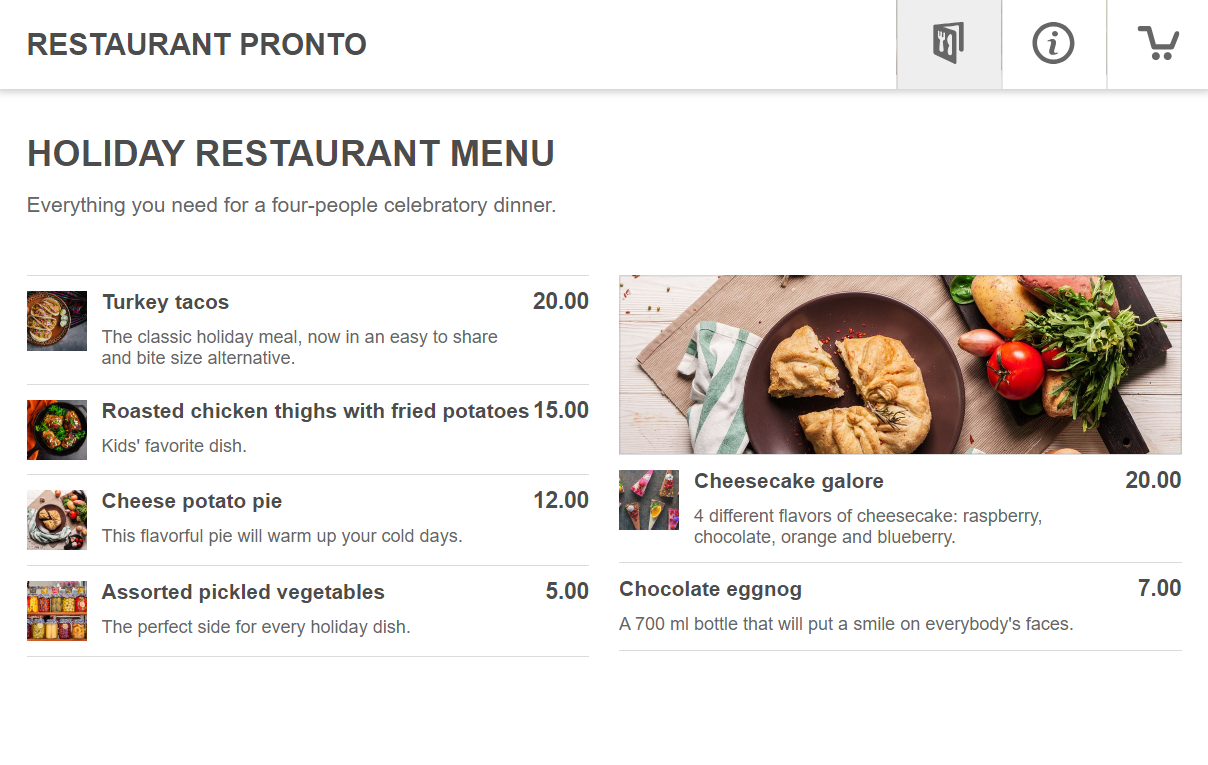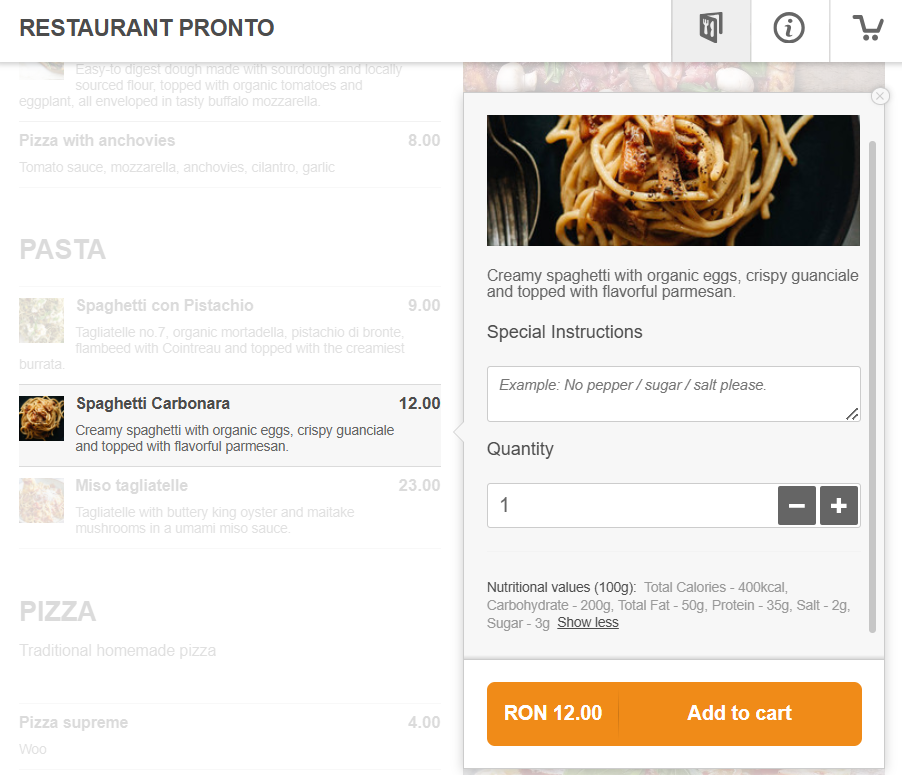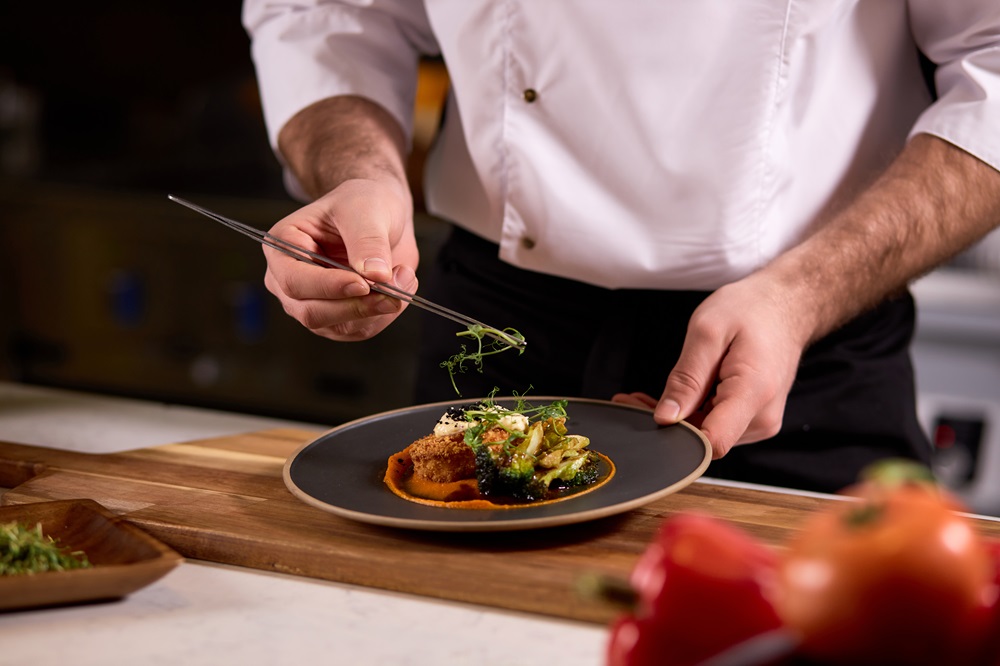- 1.What is a Seasonal Menu?
- 2.5 Benefits of a Seasonal Restaurant Menu
- You can source your ingredients locally
- It lowers food costs
- It increases creativity and attracts new people
- You will serve tastier, healthier food
- It will increase your profits
- 3.5 Seasonal Menu Ideas: How to Implement a Rotating Menu
Are you thinking of surprising your restaurant customers with unique, freshly-tasting dishes year-round? How about implementing a seasonal restaurant menu? In the article below, I look at the main advantages of having a rotating menu. Additionally, I provide a few tips and tricks on how to get started with the process.
What is a Seasonal Menu?
A seasonal menu is a limited-edition menu that relies on seasonal ingredients to create unique dishes that revolve around the flavors of that time of the year. It is an excellent way to switch up ingredients and attract new customers to your restaurant.
5 Benefits of a Seasonal Restaurant Menu
Here are the unmistakable benefits you will enjoy if you start ranking high for searches like “seasonal menu restaurant near me” in your local area:
1. You can source your ingredients locally
Perhaps the biggest selling point of seasonal menu items is that you can source them from local producers. The farm-to-table movement is a continuously developing trend, and it comes with many benefits itself.
Not only do you have faster access to ingredients, which means they’ll be fresher. You’ll also do your part in lowering the carbon footprint because they won’t be shipped to you from across the country.
Getting in touch with local farmers can help you support the community and show people who care about the ethics of the restaurants they frequent that you are a business worth supporting.
2. It lowers food costs
A seasonal restaurant menu can also help you save money by buying locally. You will notice that according to the season, some ingredients grow abundantly, which also means they’re cheaper.
For example, your summer seasonal menu could contain a lot of sweet corn, zucchini, or blueberries, all of which are easy to source from local farmers. Your seasonal recipes for fall could include ingredients like pumpkin and butternut, which are very popular during that season.
3. It increases creativity and attracts new people
Seasonal foods give you a chance to experiment with your restaurant menu and attract people who are interested in new, exciting culinary experiences. If your chef enjoys coming up with new menu items, they’ll definitely appreciate your choice to go with a rotating menu for your restaurant.
Not to mention switching up your menu allows you to revamp your marketing strategy as well. This might pique the interest of people who weren’t curious about your restaurant before.
At the same time, regulars will appreciate that their favorite restaurant is innovating and look forward to every time you change your menu.
4. You will serve tastier, healthier food
Seasonal ingredients aren’t just fresher; they’re tastier too. Using ingredients during peak season impacts the quality of your dishes. It helps you draw customers in with flavorful, mouth-watering menu items.
Seasonal recipes are also healthier. Most local farmers don’t use harmful pesticides on their crops, so the produce ends up being more nutritional.
If you use our online menu builder, you can easily advertise the nutritional values of each dish to attract people who want to eat healthier.
5. It will increase your profits
Finally, a seasonal restaurant menu can ultimately boost your order profits by 26%. And it’s not hard to figure out why. As soon as summer starts, people are in the mood for fresh fruit like watermelon and strawberries. When that fall breeze starts blowing, they start dreaming of pumpkin spice lattes and pies.
Seasonal ingredients evoke a nostalgia that we associate with our childhood when having turkey at Thanksgiving or apple pie at Christmas was the norm.
Related: 10 Restaurant Food Promotion Ideas to Say Goodbye to the Summer Season
5 Seasonal Menu Ideas: How to Implement a Rotating Menu
Outshine your competition by becoming one of the few restaurants with seasonal menus in your area and enjoy your newfound clients:
1. Find your sources
The process of implementing a seasonal restaurant menu has to start at the source: local farms. Since this choice will impact all other aspects related to menu seasonality, it’s not one you should take lightly.
It’s good to have a seasonal food list of ingredients you’d like to use when visiting potential farms. However, keep an open mind and be on the lookout for produce they might have that you could integrate into your menu, although you weren’t planning on it.
Once you’ve found a place that seems like a good fit in terms of produce, negotiate delivery and inquire about a possible price break. When ordering in bulk, owners might be open to discounts.
Read more: How to Choose the Best Restaurant Suppliers for Your Business
2. Taste the produce yourself
Like with any new menu item you roll out, you and your team have to taste test it first before making it available to the public. The same goes for the products themselves. Before you strike up a deal, see if the ingredients adhere to your standards.
The next step would be to cook with them and invite the entire team for a tasting session. Ask for feedback on whether the ingredients truly make your dishes shine, or you have to look for a different provider.
3. Train your staff
Handling and cooking with fresh ingredients can differ from using ingredients that come in cans or bags. If you’re just starting out with a seasonal menu, you need to train your employees to make sure everything is up to code.
From slicing and chopping vegetables to the proper cooking temperature, the way you prepare the food can positively or negatively affect your business. If not cooked properly, even the best ingredients won’t taste the way they’re supposed to. Your staff needs to be prepared to make the most out of your seasonal restaurant menu.
Read more: Restaurant Staff Training 101: How to Improve Efficiency with Practical Training Methods
4. Promote your seasonal menu
The next step is to market your seasonal menu on your website, social media, newsletter, and in your brick-and-mortar location. Get the word out that you’ve updated your menu and focus on the fact that you’re using locally sourced ingredients.
Post delicious-looking photos of the new dishes, roll out exclusive restaurant promotions, and why not, even organize a contest to get some user-generated content from your followers.
Since the main characteristic of a seasonal menu is that it won’t be here forever, capitalize on that limited-time feel to encourage customers to try it before it goes away.
If you notice an item becoming very popular, consider bringing it back next year and ramp up excitement surrounding the release for people dying to try it again.
You might also like: 4 Menu Engineering Design Tips & Secrets That Will Boost Your Sales
5. Don’t change every single item
All that being said, it doesn’t mean that every time you roll out a seasonal menu, you have to replace every single item. So even if you’re offering a summer or a spring seasonal menu, keep some of the menu items that people love the most and that are staples of your restaurant.
Some customers don’t like change and prefer to order what they always do. It’s essential to cater to them as well. Even if people’s favorite dishes aren’t made with seasonal ingredients, they will still sell well and keep everyone happy.
To make your work easier, you need to have a restaurant menu that is easy and free to update, as many times as you want. Check out our online menu builder that will make your seasonal menu pop:
Conclusion
Implementing a seasonal restaurant menu is an excellent way to become more environmentally friendly by serving delicious, locally sourced food to your restaurant patrons. Not to mention it can actually boost your sales and lower food costs. Start implementing a seasonal menu strategy by following the tips above.
You might also like:





